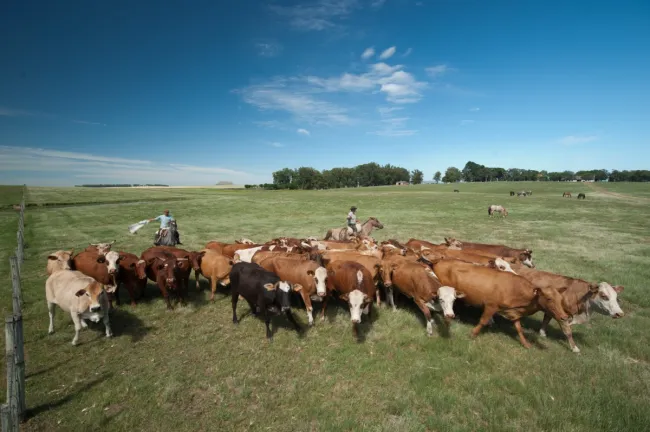If everyone in the world ate a diet consistent with the United States Department of Agriculture’s dietary guidelines, we would need more additional farmland than the amount of fertile land available, claims a recent paper.

Shifting to the USDA guidelines would decrease the amount of land used to provide food for people in North and South America and Oceania, due partly to a reduction in meat consumption (and therefore in grain use). However, Africa, Eastern Europe and the European Union would use more land under USDA guidelines than for the diets actually eaten in 2010, while Asia would use roughly the same amount of land as for 2010 diets. The paper made its calculations on the basis of current agricultural practices.
The authors point out that it is unsurprising that some areas in which undernourishment is relatively widespread (e.g. Africa) would use more land if they switched to the USDA guidelines. However, the European Union gives an example of an area that both uses less land than the USDA guidelines and also has very little undernourishment - suggesting that current USDA guidelines are not optimal from the point of view of balancing land use and health.
The authors call for land use considerations to be incorporated into national dietary guidelines.
Abstract
Global food security and agricultural land management represent two urgent and intimately related challenges that humans must face. We quantify the changes in the global agricultural land footprint if the world were to adhere to the dietary guidelines put forth by the United States Department of Agriculture (USDA), while accounting for the land use change incurred by import/export required to meet those guidelines. We analyze data at country, continental, and global levels. USDA guidelines are viewed as an improvement on the current land-intensive diet of the average American, but despite this our results show that global adherence to the guidelines would require 1 gigahectare of additional land—roughly the size of Canada—under current agricultural practice. The results also show a strong divide between Eastern and Western hemispheres, with many Western hemisphere countries showing net land sparing under a USDA guideline diet, while many Eastern hemisphere countries show net land use increase under a USDA guideline diet. We conclude that national dietary guidelines should be developed using not just health but also global land use and equity as criteria. Because global lands are a limited resource, national dietary guidelines also need to be coordinated internationally, in much the same way greenhouse gas emissions are increasingly coordinated.
Reference
Rizvi, S., Pagnutti, C., Fraser, E., Bauch, C.T. and Anand, M., 2018. Global land use implications of dietary trends. PloS one, 13(8), p.e0200781.
Read the full paper here. See also the Foodsource building block What is land use and land use change? The FCRN’s report Plates, pyramids and planet assesses national dietary guidelines and the extent to which they incorporate sustainability.
You may also be interested in the FCRN’s commentary on the paper Energy use, blue water footprint, and greenhouse gas emissions for current food consumption patterns and dietary recommendations in the US, which claims that the energy use, emissions, and water use of US diets would actually increase if citizens adhered to the USDA guidelines. See also a response from the author Michelle Tom here, and a commentary from Mike Hamm here.
Other relevant FCRN blog posts include U.S. Dietary Guidelines Report – What's the Fuss Over Sustainability? and Who will win in the battle over sustainability in the Dietary Guidelines for Americans, science or special interests?




Comments (0)